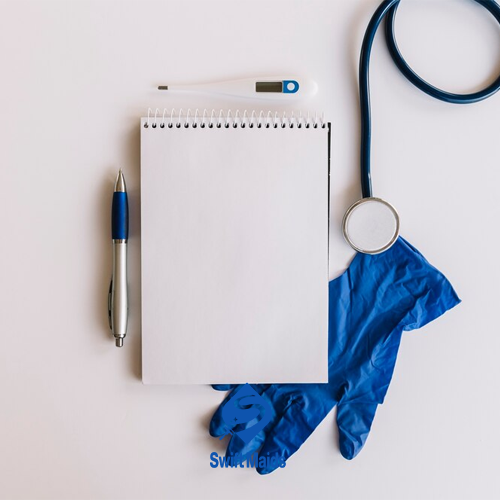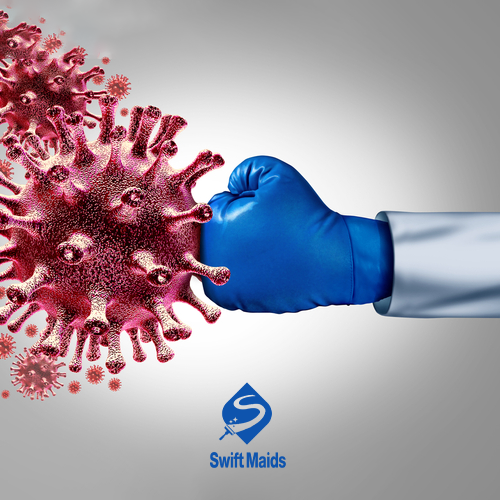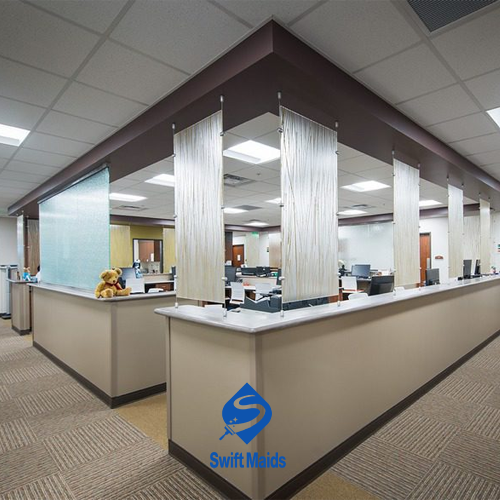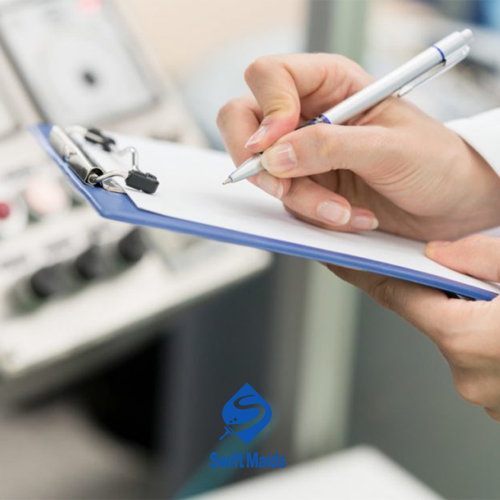When you enter the office as a patient or healthcare professional, you expect the space to be organized and safe in addition to being specialized in treatment. Cleaning these spaces is something that should be given a lot of attention. It is a critical aspect of patient care and the overall patient experience. To maintain high standards of cleanliness and hygiene, medical offices rely on a structured Medical office cleaning checklist.
In this comprehensive guide of Swift Maids, we examine the key and important components of the Medical office cleaning checklist, along with the reasons why this work is necessary and the solutions to ensure that your medical center remains a safe and hygienic place.
The importance of the Medical office cleaning checklist
First of all, let’s look at the reasons for using a Medical office cleaning checklist and why it is so important:
Infection control
One of the most important concerns in any healthcare facility is infection control. Patients who have a weak immune system are usually more susceptible to infection than others. A well-structured cleaning checklist helps reduce the transmission of various diseases and infections among patients, visitors, and staff, thus increasing patient safety.
Patient safety
Patients usually go to medical offices for the treatment of various diseases. A thorough cleaning checklist helps reduce the risk of healthcare-related accidents, injuries, and infections and ensures patient well-being.
Professional Image
The cleanliness of the medical office shows its professionalism and competence. Patients are more likely to trust a healthcare facility that looks clean, organized, and hygienic. A clean environment can contribute to a positive patient experience and build trust with your customers.
Compliance with regulations
Medical offices must be subject to strict regulations and standards set by health authorities. The cleaning checklist ensures compliance with these regulations and rules, which are critical to avoiding penalties and legal issues.
Read Also: Commercial Cleaning Calgary
Key components of a Medical office cleaning checklist
Let’s examine what components a medical office cleaning checklist contains and how each of these components should be cleaned:
Reception and waiting areas
Clean and disinfect reception counters, computers and keyboards because patients and staff usually touch them. Clean and then disinfect all surfaces that are frequently touched by people, including door handles, light switches, and seats. Vacuum and clean the floor of the waiting area to remove dirt and allergens. Empty the trash cans and change their plastic regularly to prevent the spread of germs.
Examination and treatment rooms
Clean and then disinfect the parts that are related to examining patients, including changing disposable paper covers after each patient. Disinfect medical equipment, including blood pressure devices, medical phones, and other items to prevent cross-contamination. Clean all surfaces, including sinks, cabinets, and all areas that patients come in contact with. Make sure hazardous waste containers are properly sealed and labeled for safety. Replace the necessary equipment, including examination gloves, gowns and face masks to ensure a sterile environment.
Toilets
Clean and disinfect all bathroom equipment including sink, toilet and mirror. To encourage hand hygiene, prepare special hand sanitizers and regularly refill the paper towel dispenser. Empty and disinfect trash cans as they can harbor germs and odors. Ensure proper ventilation to prevent moisture build-up and mold growth, and use air fresheners if needed.
Staff areas
Clean and then disinfect areas that are shared, including break rooms and offices, to reduce the risk of cross-contamination. Disinfect appliances such as refrigerators, stoves, microwaves, coffee makers, and shared workstations. Empty the trash cans and replace their plastics to maintain a completely sanitary work space. Ensure that staff personal protective equipment, including gloves and face masks, are properly stored and that safety protocols are followed.
Hallways and Corridors
Vacuum and mop all public areas regularly to remove dirt and debris. Clean handrails and disinfect elevator buttons as they can be touched by most patients and staff. Try to use proper lighting and replace burned-out bulbs to have a bright and safe environment.
Trash disposal
Implementing a safe disposal system for all types of waste including biohazardous waste, sharps, and general medical waste. Follow all waste disposal regulations and keep waste disposal records to ensure compliance. Clean and organize waste storage areas to prevent contamination and ensure the safety of personnel.
Infection control measures
Provide hand disinfection stations for patients, visitors, and staff. Ensure all staff follow hand hygiene and infection control protocols. Periodically conduct infection control training and awareness programs for all employees so that they are aware of best practices.
Regular inspection and maintenance
Schedule regular inspections to identify cleaning and maintenance needs and address problems promptly. Record all cleaning and maintenance activities to demonstrate your commitment to a clean and safe environment and ensure compliance with regulations.
Training and Education
Ensure that all staff are trained in medical office cleaning protocols and adhere to established standards. Raising awareness among staff and visitors about the importance of cleanliness and hygiene is very important to encourage collective effort and maintain a safe environment.
Communication
Establishing clear communication channels for reporting cleaning issues and requesting maintenance is critical to quickly address problems. Encourage feedback from staff and patients to continually improve cleanliness standards and ensure facility cleanliness meets their expectations.
Customizing Medical office Cleaning Checklists for Different Specialties
A medical office cleaning checklist is not one-size-fits-all. Each medical specialty has unique cleaning needs that require a customized approach to maintain hygiene and patient safety. Customizing the checklist ensures that the specific requirements of different facilities are met effectively.
Dental Offices
In dental offices, the focus lies on sterilizing equipment like dental chairs, instruments, and surfaces. Regular disinfection of patient areas is a key component of the medical office cleaning checklist, to ensure a germ-free environment for oral health procedures.
Surgical Centers
For surgical centers, maintaining a sterile environment is critical. A comprehensive cleaning for these facilities includes detailed cleaning steps for surgical tools and high-touch surfaces to minimize infection risks. Furthermore, thorough cleaning of operating rooms, including air filtration systems, is essential to prevent airborne contamination and maintain aseptic conditions.
Pediatric Clinics
Pediatric clinics cater to children, making it essential to clean and disinfect toys, books, and play areas frequently. Including the use of child-safe cleaning agents in the medical office cleaning checklist creates a safer space for young patients.
Dermatology and Aesthetic Clinics
These facilities require special attention to sanitizing treatment beds, laser devices, and skincare tools. Proper handling of sensitive equipment ensures hygiene without compromising the effectiveness of the tools. In addition, regular cleaning of common areas like waiting rooms and reception areas is crucial to prevent the spread of germs and maintain a welcoming environment for patients.
Conclusion
Finally, it should be said that a comprehensive medical office cleaning checklist is an essential tool to ensure the health and well-being of patients, staff, and visitors. By consistently following the key points outlined in this article, you can create a robust cleaning program that will keep your facility safe, professional, and in compliance with healthcare regulations.
In addition to demonstrating professionalism, a clean medical office ensures a commitment to safety, trust, and quality patient care. This is proof of your commitment to providing a sterile and pleasant environment for patients, ensuring their health and creating a positive experience for patients. By prioritizing cleanliness and hygiene, your practice will stand out in the healthcare community and reassure patients and staff alike that their well-being is your top priority.






